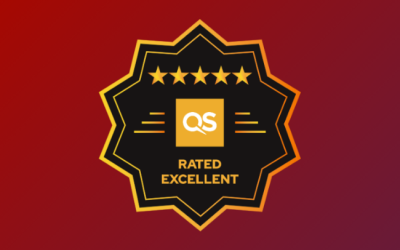 Blog
BlogAgile methodologies in the company
Agile methodologies have revolutionised the way organisations manage their projects, enabling faster development and effective adaptation to changing customer needs.
This approach is based on principles that foster collaboration, flexibility and continuous improvement, offering innovative solutions in dynamic work environments.
Below, we will explore the fundamental concepts of the agile method, including Scrum, Kanban and other agile frameworks, as well as the importance of building agile teams that drive project success.
What is agile methodology?
Agile methodology is a set of practices that seeks to improve agile project management through short iterations and continuous product delivery.
According to Jim Highsmith, one of the founders of agile principles, rather than following a rigid plan, agile focuses on adapting to change and responding quickly to customer needs.
This approach was formalised in the Agile Manifesto, which emphasises the importance of communication, collaboration and functional software delivery.
Agile principles
The principles of Agile are fundamental to understanding its philosophy. These principles include:
- Customer Satisfaction: The priority is to satisfy the customer through continuous delivery of functional software.
- Collaboration: Open communication among team members and with stakeholders is essential.
- Adaptation to change: Teams must be prepared to respond to changes in requirements, even in the late stages of development.
- Continuous improvement: Reflection and constant learning are vital to optimise processes and results.
Most commonly used agile methodologies
Implementing agile methodology in your company involves a series of processes and tools that usually have a response to change.
To this end, departments such as human resources need to pay continuous attention to productive development in the face of the introduction of new agile practices. The most commonly used agile methodologies are the following:
Scrum
Scrum is one of the most popular agile frameworks, used to manage complex projects. It is based on work cycles called sprints, which are short iterations, usually 2-4 weeks. During each sprint, the agile team focuses on completing a specific set of tasks, enabling early and continuous delivery of a final product.

Roles in Scrum
The roles in a scrum team are essential to its functioning:
- Product Owner: represents the customer and is responsible for prioritising the product backlog.
- Scrum Master: facilitates the scrum process, removing obstacles and ensuring that the team follows agile practices.
- Development Team: group of professionals working on the sprint tasks.
Kanban
Kanban is another agile method that focuses on workflow visualisation. Using Kanban boards where tasks are displayed at different stages of the process helps teams to identify bottlenecks and optimise delivery. Kanban promotes a steady pace and continuous improvement, adapting quickly to changes.
Extreme Programming (XP)
Extreme Programming is an agile methodology that emphasises technical excellence and high quality software development. It includes practices such as pair programming, continuous code review and frequent integration. This methodology focuses on constant collaboration and feedback, ensuring that customer needs are met.
Implementing agile methodologies
Implementing an agile methodology in an organisation requires a cultural shift and a commitment to continuous improvement. Here are some key steps to implement agile effectively:
Education of agile teams.
Agile teams are critical to the success of any agile methodology. These teams must be:
- Self-organised: able to manage their work without the need for micromanagement.
- Multidisciplinary: composed of members with diverse skills, allowing multiple aspects of the project to be addressed.
Open communication
Open communication among team members is essential to foster collaboration and ensure that everyone is aligned with project goals. Daily follow-up meetings are a common practice in scrum that helps maintain focus.
3.3 Continuous Delivery
Continuous delivery is a key principle in agile that allows teams to release incremental versions of their product on a regular basis. This not only improves the quality of the software, but also ensures that the product aligns with customer needs.

Advantages of agile methodologies
- Flexibility and adaptability: they allow organisations to adapt quickly to changes in project requirements. This is especially important in a working environment where customer needs may change frequently.
- Improved product quality: by focusing on frequent deliverables and continuous improvement, teams can identify and correct problems more quickly, resulting in a higher quality end product.
- Customer satisfaction: by involving customers in the development process and aligning deliverables with their expectations, greater overall satisfaction is achieved.
- Team collaboration: fostering an environment where collaboration is valued allows stakeholders to work together to achieve a common goal.
Challenges of agile implementation
Despite its many advantages, implementing agile methodologies is not without its challenges. Some of these challenges include:
- Resistance to change: the cultural change required to adopt Agile can encounter resistance, especially in organisations with rigid hierarchical structures.
- Lack of experience: Lack of knowledge or experience in Agile methods can make it difficult to effectively implement methods, processes and tools such as Scrum and Kanban.
- Difficulties in scalability: As organisations grow, scaling agile methodologies can be difficult, as practices must be maintained without losing flexibility.
Tools for agile management
To apply the agile methodology, there are several tools and techniques that can facilitate the implementation of the most commonly used agile methodologies.
Project management tools
- Jira: popular with Scrum teams, it allows backlog management, sprint planning and tracking of project progress.
- Trello: uses visual boards to manage tasks and projects, ideal for teams using Kanban.
Collaboration tools
- Slack: facilitates communication between team members, allowing the creation of thematic channels.
- Confluence: allows processes to be documented and knowledge to be shared among team members.
Conclusions
Agile methodologies have transformed the way projects are managed today. By implementing agile methodology, organisations can quickly adapt to changing customer needs, improve the quality of their products and foster a culture of continuous improvement.
However, to achieve a successful implementation, it is critical to overcome the associated challenges and build agile teams that focus on collaboration and continuous delivery. With the right methodology and a commitment to improvement, organisations gain a competitive advantage, achieving new levels of efficiency and effectiveness in their projects.













